The UK and Italy led the European new car market’s recovery in 2023 as the world emerged from the Covid pandemic and the subsequent supply chain disruption, while the US and Japan also bounced back significantly, Tesla set a new sales record and China’s BYD emerged as a global force.
After three years of doom and gloom, a degree of normality returned to the global market, with every region finally recording sales increases again and firms like Toyota, Tesla, Mercedes-Benz and JLR rediscovering their mojos.
Perhaps the most remarkable story is that of an EV becoming a global best-seller, the Tesla Model Y removing the Toyota Corolla from the throne after many years. As a sign of the change to come in the run-up to 2035 as electrification takes hold in global markets, it will make 2023 one of the most memorable years in the automotive industry’s history.
Despite the Corolla stumbling, Toyota actually reinforced its position as the global number-one car maker, significantly ahead of its nearest rival, the Volkswagen Group. It was also the biggest brand in the number-two market, the US. The Japanese juggernaut may have been a vocal critic of lawmakers' focus on battery-electrification, but so far that hasn’t significantly damaged its standing.
Of course, the pivot to EVs is gaining pace, but different markets are in different stages of adoption. China continues to lead the way, with EVs accounting for more than 30% of its sales, while Europe is moving from early adopter to mass market, at nearly 15% electric, with signs that new corporate-average emissions rules might speed up adoption. Meanwhile, the US, despite being the home of Tesla, lags behind the other main markets, with just 8%.
The year ahead will be fascinating as some markets go hardcore on electrification. The UK’s legally binding zero-emissions vehicle mandate, for example, should boost the EV sales mix by around 5% to 22% by the end of 2024, which equates to around an extra 110,000 EVs.
Global recovery from Covid chaos
Global new car sales made a very welcome recovery in 2023 after three years of disruption by Covid, parts shortages and rising energy prices, with the UK, Italy, Japan and the US a l l recording significant rises.
The UK and Italy led the way, with 18% and 19% increases, and overall around seven million more cars and light vans were sold in the top 10 markets in 2023 than in 2022. The US alone bought 1.76 million more than in the year before.
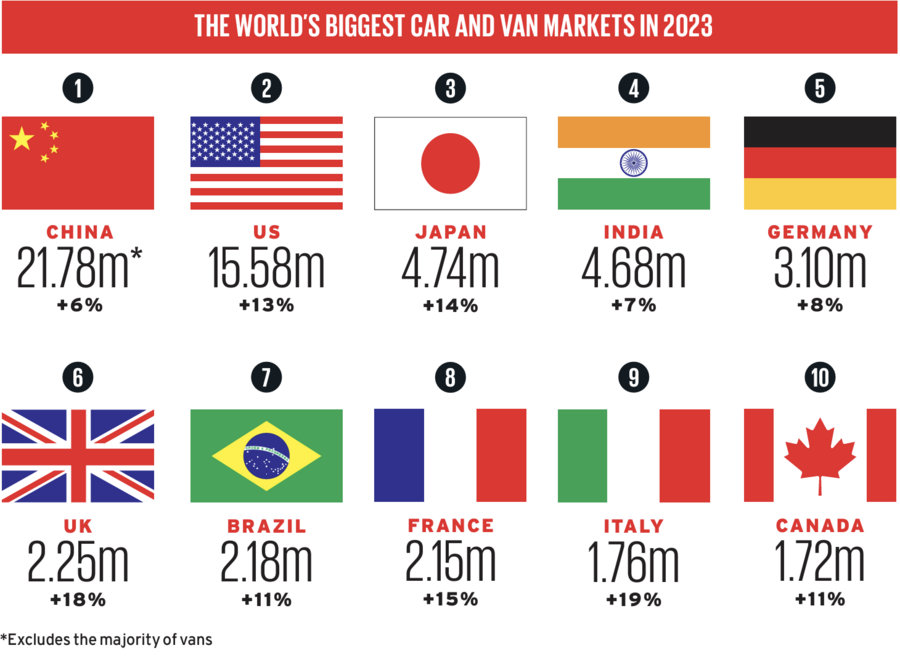




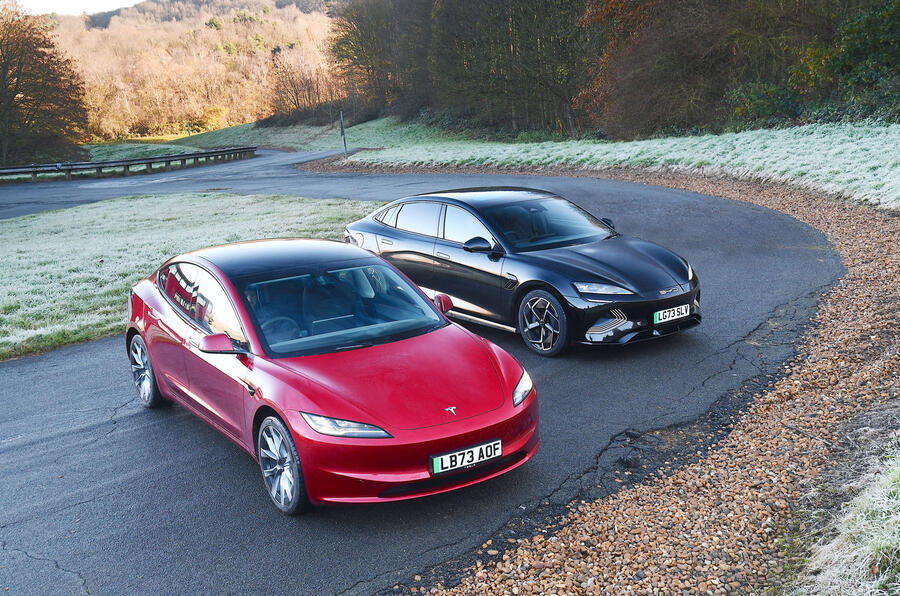

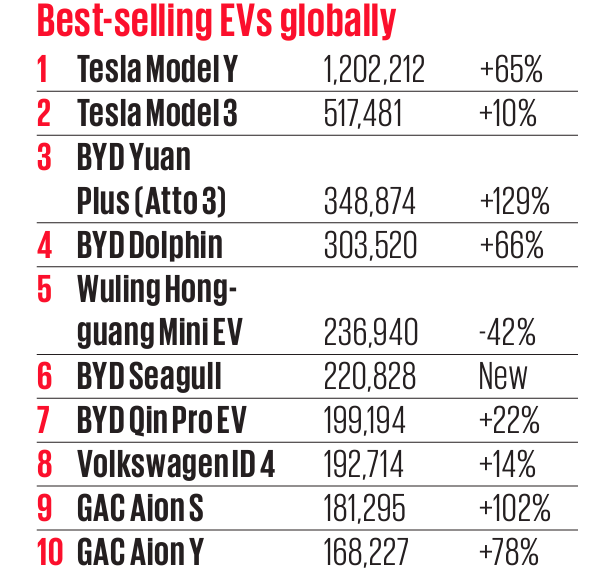
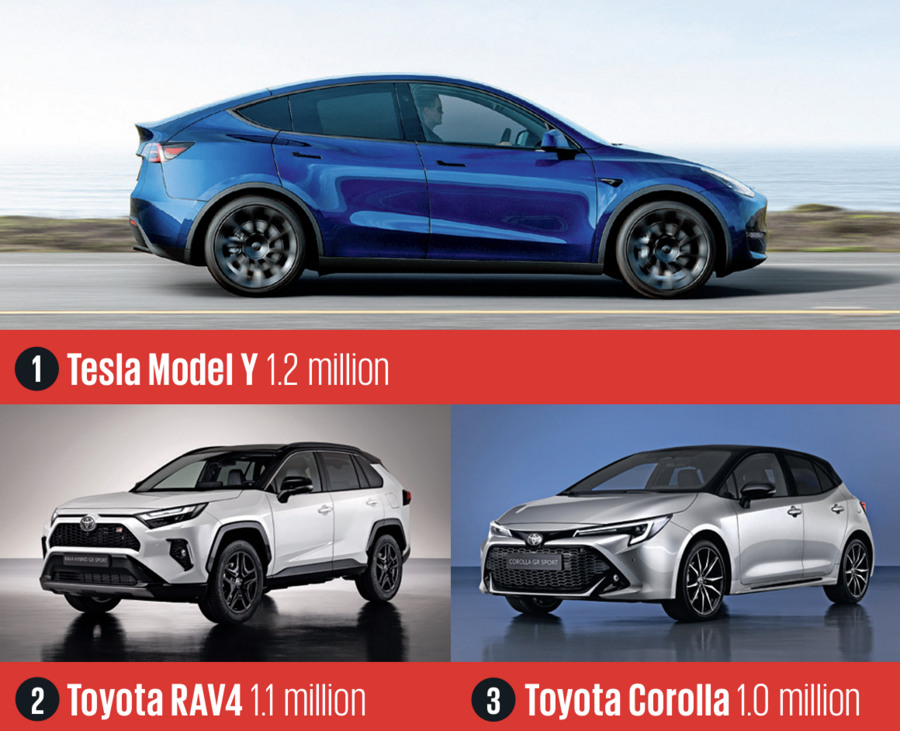

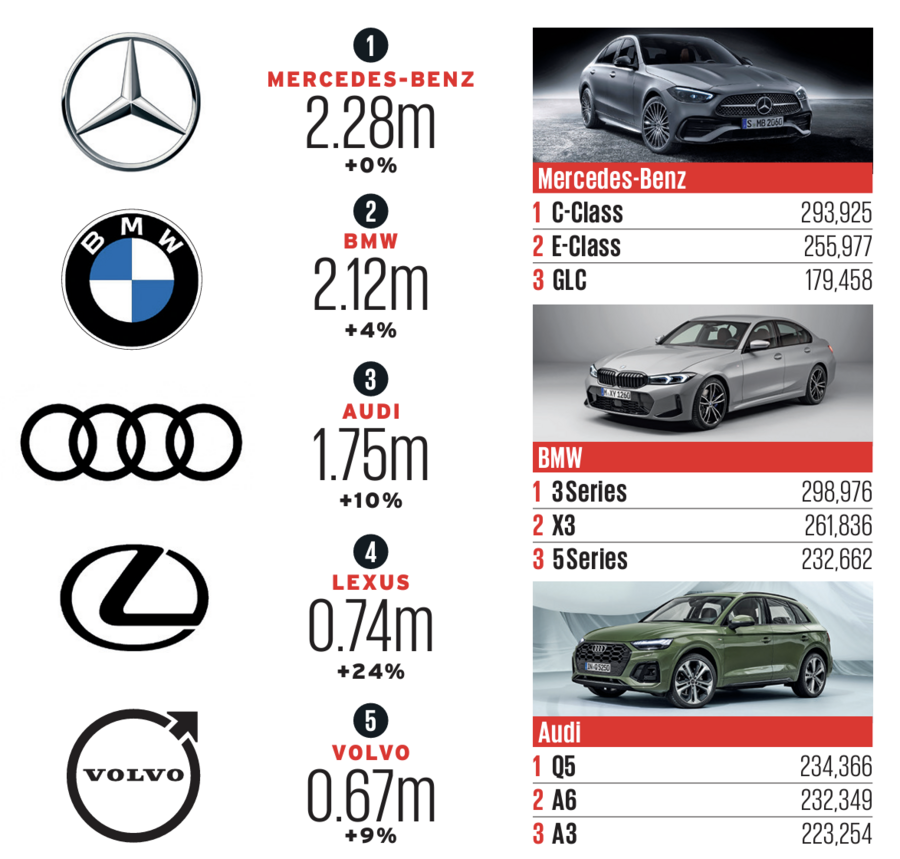
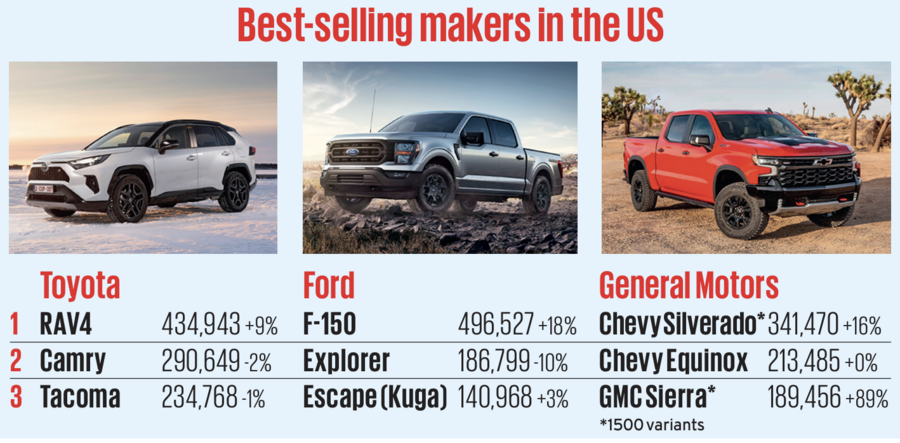



Add your comment